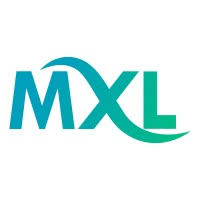
Robinjasper1109
Uploaded on Sep 22, 2025
In an era where environmental, social, and governance (ESG) factors are no longer a footnote but a core part of business strategy, companies are facing a new challenge: how to effectively educate their entire workforce on sustainability. From the complexities of supply chain ethics in Retail to managing emissions in Oil and Gas, the topics are vast and constantly evolving. Traditional, long-form training is simply too slow and inefficient. The solution lies in a modern, agile approach: delivering business sustainability training through microlearning snippets. This article explores why using a Microlearning Platform to deliver bite-sized content is the most effective way to empower employees and embed a lasting culture of corporate responsibility. Why Microlearning is the Ideal Fit for a Sustainable Mission Sustainability is a collective effort, requiring buy-in from every employee. Microlearning, with its focus on small, actionable units of knowledge, is the perfect vehicle for this crucial task. Complexity Made Simple: A complex topic like a new environmental regulation in the Banking sector or a carbon reduction goal for a Pharma company can be broken down into a series of focused, easily digestible modules. A Microlearning Authoring Tool can turn a dense report into a series of short videos, interactive quizzes, or infographics, making the information less intimidating and more accessible. Engaging the Entire Workforce: Sustainability isn't just for a dedicated team—it's for everyone. A Microlearning Application can be used to deliver relevant, role-specific content to all employees, from a front-line staff member to a senior executive. This ensures that every individual, regardless of their position in the company, understands their role in achieving corporate sustainability goals. Keeping Pace with Rapid Change: Regulations, best practices, and new technologies in sustainability are constantly evolving. A robust Microlearning Platform allows companies to create and deploy new microlearning courses with speed and efficiency. This is vital for industries like Mining and Insurance, where staying compliant with the latest standards is not just a matter of good practice, but a legal necessity. The Tools That Power Sustainable Training The success of your microlearning strategy for sustainability hinges on having the right technology. These tools act as the engine that drives your training program. Content Creation: A modern Microlearning Authoring Tool is your key to creating compelling content without extensive technical expertise. These tools streamline the process of building interactive modules. For a truly efficient approach, look for an AI-powered Authoring Tool that can analyze a company’s existing sustainability reports, policies, or even a long-form training manual, and automatically generate a series of engaging, bite-sized microlearning courses. Content Management & Delivery: Once created, the content needs a central hub. A reliable Microlearning Platform or a specialized Microlearning LMS provides a powerful solution for organizing, deploying, and tracking all your sustainability content. The latest platforms, often referred to as an AI-Powered Learning Platform, can use data to personalize training paths, ensuring that a Finance professional receives content on sustainable investment, while a Health care worker gets a module on reducing medical waste. Accessibility and Application: For a training program to be truly effective, it must be easily accessible. A well-designed Microlearning Application allows employees to access sustainability snippets on the go, whether they are in the field or on a factory floor. This enables "just-in-time" learning, where a Mining employee can quickly review a module on land reclamation best practices right before beginning a task. Real-World Impact Across Industries The versatility of microlearning allows it to address the specific sustainability challenges of each sector. Finance & Banking: Training on green bonds, ESG principles, and responsible investment to meet a growing market demand for ethical financial products. Retail: Modules on ethical sourcing, reducing packaging waste, and in-store energy conservation. Mining & Oil and Gas: Courses on new technologies for emission reduction, land reclamation, and responsible resource extraction. Healthcare & Pharma: Training on proper medical waste disposal, sustainable supply chains, and green procurement policies. Insurance: Education on the risks of climate change and how to develop and market sustainable insurance products. By leveraging Microlearning Tools and a strategic approach, companies can transform their sustainability goals from abstract concepts into concrete, actionable behaviors. It’s an investment that not only builds a more knowledgeable and responsible workforce but also positions the business as a leader in a global economy that increasingly values environmental and social stewardship.

Comments